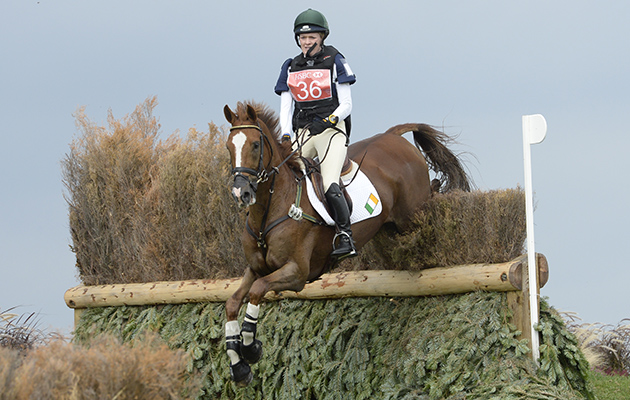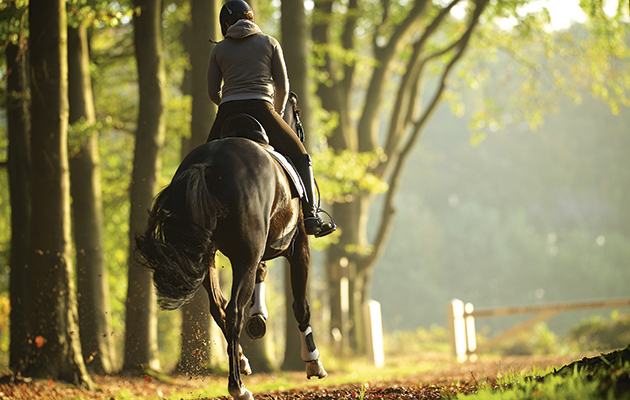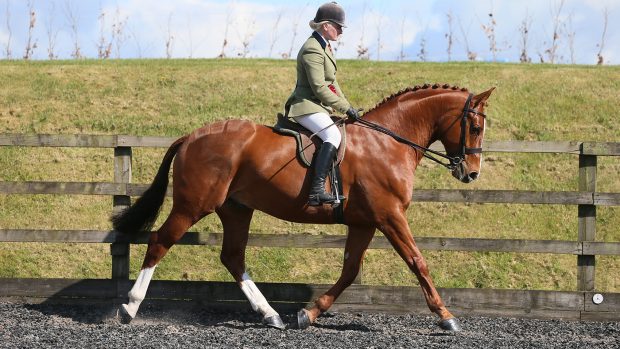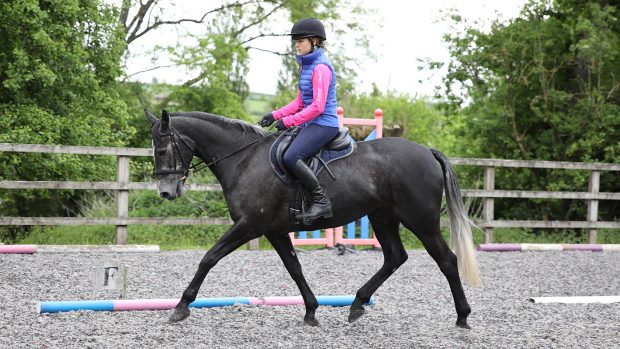Danielle Heath (pictured) is one of the most successful riders and producers in the country. A regular finalist and winner at the Royal International and Horse of the Year Show (HOYS), she stood hunter champion at HOYS in 2011 with Sally Iggulden’s Oathill Take The Biscuit, becoming the first woman to lift the title in 10 years.
Training the stars
Whittaker’s Prince, riding horse champion at HOYS in 2012, was always inclined to be spooky. I had him from the age of four and trained him to be able to deal with unfamiliar problems by encouraging him to go past, rather than bullying him, then rewarding him with praise.
Horses are programmed to run away from anything unfamiliar and potentially threatening. Spooking in a busy ring is common because the horse is accustomed to working in a particular environment: either at home or at a trainer’s yard.
I find this problem is often compounded by the rider, who may be nervous and so becomes more tense, which will in turn transfer to the horse.
It is equally important to prepare the rider, and I work with my pupils to teach them how to stay relaxed and to keep the same feeling through the hand and leg all the time. At a show, if a horse reacts to something it is important that the rider is ready with the leg, hand and voice to carry the horse through the problem. A lot of the time, it’s the rider who spots the banner before the horse does, and tenses accordingly.
It is a vital part of a horse’s preparation to take it to at least two shows where it isn’t competing to be ridden round to soak up the atmosphere.
Sometimes, it’s a positive if a horse is very alert as it gives them presence in the ring. If you can learn to channel it in the right way, this energy can give an animal the edge over your competitors.
Tackling the issue
1. A useful arena exercise is the basic leg-yield. If you can control a horse between your hand and leg from walk through to canter, you should be able to control a situation when a horse becomes nervous when going past something spooky by giving it security and confidence.
I begin by the fence on the long side of the arena and ask my horse to move away with my outside leg. Once he is doing this comfortably in walk, I progress through to trot and gradually to canter. Don’t overdo the exercise, as the horse will start to anticipate.
2. Turn the horse’s eye away from the problem rather than going at it head on — if you know there’s a part of the ring where the horse will get nervous, turning his head slightly away by using inside bend will give him the idea he’s not heading towards the problem.
3. Work on your own confidence. If you are feeling nervous it will transfer to your horse. Try to maintain the same hand and leg pressure all the time unless you need to react to something your horse does.
Article continues below…
You might also be interested in:

Using cavaletti to improve the horse’s canter and balance

#SundaySchool: showing supremo on the importance of using lateral work
This is a simple leg-yielding exercise from Sue-Helen Shuttleworth (pictured) for both established and young horses, enabling the rider to

Subscribe to Horse & Hound this spring for great savings
Consider this…
- Some riders try to avoid the issue by cutting out part of the ring. Don’t be tempted to do this — it looks unprofessional to judges.
- Riders are understandably nervous competing at bigger competitions so leave yourself plenty of time. Hack the horse around the show ground before your class and stand quietly by the ring to allow him to soak up the atmosphere without any stress.
- There are plenty of calmers on the market, which can be used on an anxious horse. I have found some to be very useful.
- Turning a horse out in the field the night or day before can help reduce any excess energy at the show, as can lungeing if your horse is particularly energetic.
For all the latest equestrian news and reports, don’t miss Horse & Hound magazine, out every Thursday





